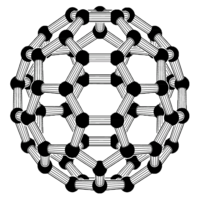Nanocrystalline material

Nanocrystalline materials are tiny particles made up of really, really small crystals. These crystals are so small that you can't even see them with your eyes - you need a special microscope to see them! Imagine a bunch of tiny building blocks that are so small, you can hold thousands of them in your hand, but you still need a magnifying glass to see each individual block.
These materials are usually made by taking a big piece of a material and breaking it down into very small pieces using special machines. When the pieces are small enough, they start to form crystals that are too small to see with the naked eye.
When materials are in this nanocrystalline state, they can have different properties than their larger counterparts. For example, they can be stronger, harder, or more resistant to corrosion. This is because the tiny crystals are packed together really tightly, making the material as a whole more dense and less prone to breaking.
Nanocrystalline materials are used in lots of different things, like coatings for tools and medical devices, and even in solar cells that can help produce clean energy. Scientists are still figuring out all the cool things that nanocrystalline materials can do, so who knows what we'll be using them for in the future!
These materials are usually made by taking a big piece of a material and breaking it down into very small pieces using special machines. When the pieces are small enough, they start to form crystals that are too small to see with the naked eye.
When materials are in this nanocrystalline state, they can have different properties than their larger counterparts. For example, they can be stronger, harder, or more resistant to corrosion. This is because the tiny crystals are packed together really tightly, making the material as a whole more dense and less prone to breaking.
Nanocrystalline materials are used in lots of different things, like coatings for tools and medical devices, and even in solar cells that can help produce clean energy. Scientists are still figuring out all the cool things that nanocrystalline materials can do, so who knows what we'll be using them for in the future!
Related topics others have asked about:
